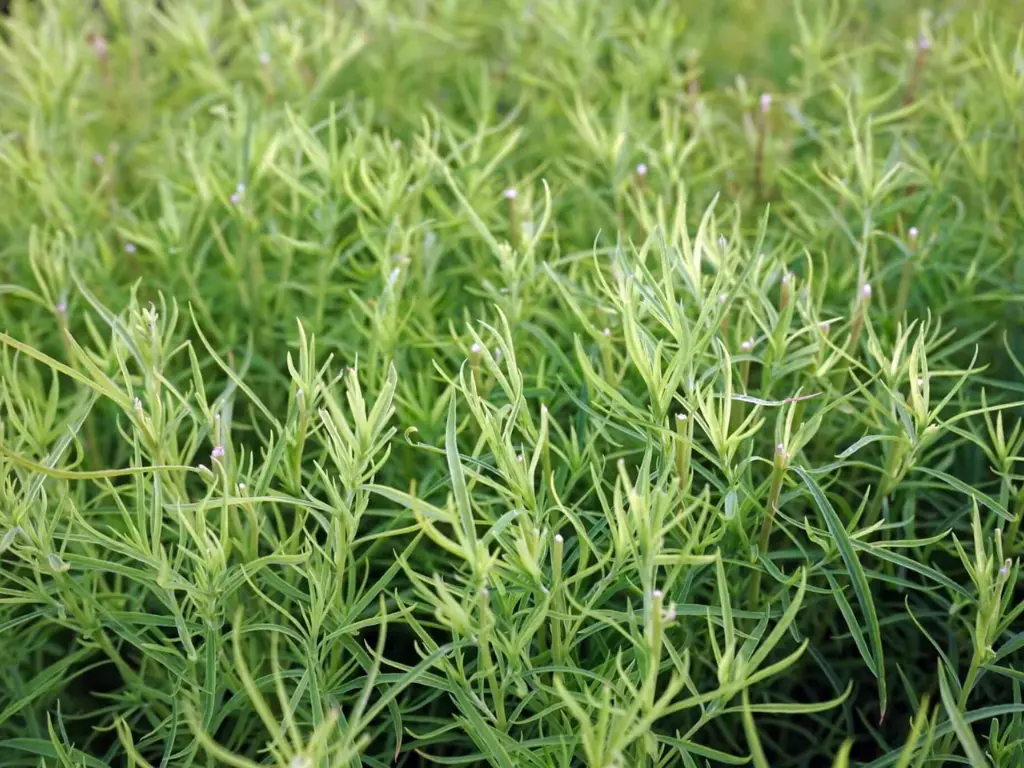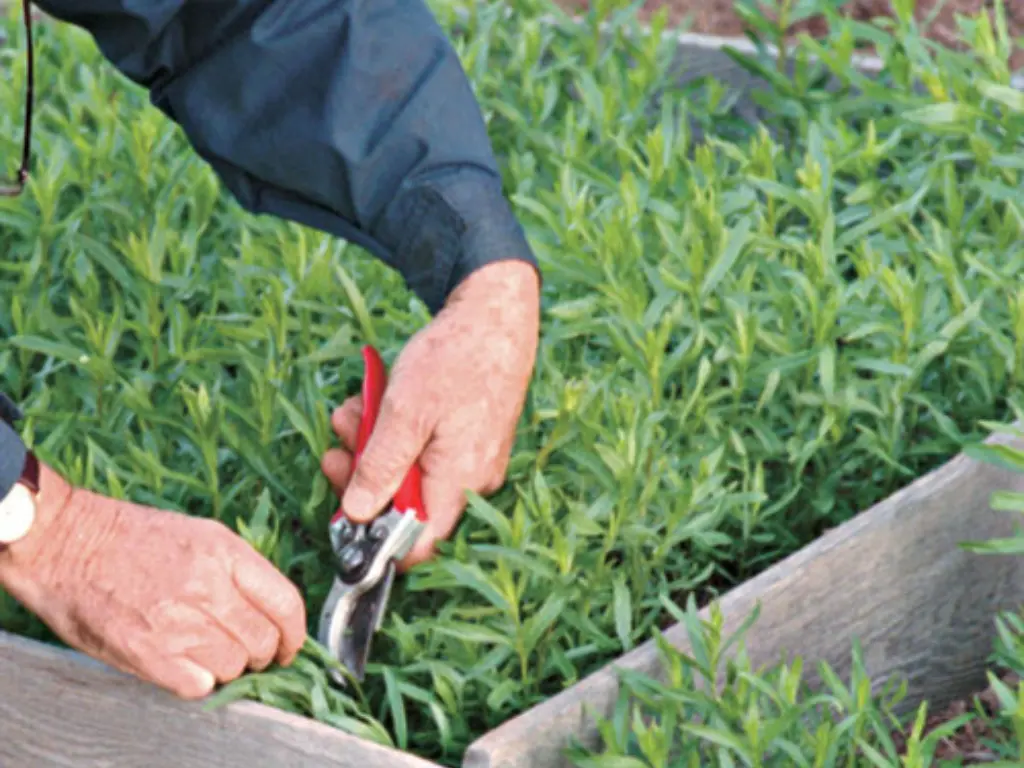Guides
How to Grow French Tarragon: Your Comprehensive Guide
French Tarragon is a favorite herb in many kitchens thanks to its unique, slightly sweet flavor that brightens up sauces, salads, and countless dishes. Growing French Tarragon at home is easier than you might expect, and with just a little care, you can enjoy fresh, aromatic leaves all season long.
Have you ever tried to grow French Tarragon but found it a bit confusing or tricky?
I totally get it! When I first started gardening, Tarragon was one of those plants I wasn’t quite sure how to handle. But once I learned a few simple things, it became one of my favorite herbs to grow and cook with.
In this guide, I’ll share everything you need to know to grow French Tarragon successfully—even if you’re a total beginner. We’ll cover what it is, how to plant it, care tips, propagation, harvesting, and how to handle common problems. Plus, I’ll sprinkle in some personal tips and stories to make it feel like you’re chatting with a friend.
What is French Tarragon?

French Tarragon (Artemisia dracunculus var. sativa) is a fragrant perennial herb belonging to the sunflower family and is known for its slender, glossy green leaves and sweet, slightly anise-like flavor. Unlike Russian Tarragon, which has a milder flavor, French Tarragon is prized for its stronger, more complex aroma and taste—making it the go-to choice for chefs and home cooks alike.
If you love dishes with delicate herb notes—like béarnaise sauce or fresh garden salads—this herb is a game-changer.
This plant has slender, dark green leaves and can grow up to about 2 feet tall (60 cm). It thrives best in temperate climates and is quite hardy once established, making it a great addition to any herb garden.
Key Features
-
Flavor: Stronger and more aromatic than Russian Tarragon.
-
Growth habit: Upright perennial, growing 18-24 inches tall.
-
Leaves: Narrow, lance-shaped, dark green leaves.
-
Climate: Thrives in temperate climates but is sensitive to extreme heat and humidity.
-
Propagation: Does not produce viable seeds; propagated by cuttings or root division.
-
Sunlight: Prefers part sun to part shade, especially in warmer zones.
Planting French Tarragon

Best Time to Plant French Tarragon
For most beginner gardeners, early spring, right after the last frost, is the golden window to plant your French Tarragon. This gives your plant the entire growing season to settle in and grow strong. If you live in a mild climate, early fall works too, letting the plant establish roots before winter.
Choosing the Right Location
Tarragon is a bit picky about where it grows best. It loves a spot with:
-
Morning sun and afternoon shade—especially important if you live somewhere with hot summers.
-
Well-drained soil—this herb doesn’t like to sit in wet soil or get “wet feet.”
If you’re planting in a garden bed, pick a sunny but sheltered spot. If space is tight, Tarragon does great in pots too (more on that later).
Soil Preparation
This herb loves well-drained, sandy soil. Tarragon does not like “wet feet” — soggy or heavy soils can lead to root rot and weaken the plant.
Aim for soil with a neutral pH between 6.5 and 7.5. If your garden soil is heavy or clay-like, consider mixing in sand or organic matter to improve drainage and texture.
Your Tarragon will thank you by growing happier and tastier leaves.
How to Plant French Tarragon
Since French Tarragon doesn’t grow from seed, grab a young plant or cutting from a nursery or a friend’s garden.
Here’s how I do it:
-
Dig a hole a bit wider and deeper than the root ball.
-
Gently loosen the roots if they’re packed.
-
Place the plant in the hole, then fill in with soil and pat it down softly.
-
Water generously after planting to help it settle in.
Growing French Tarragon

Watering Tips
One of the biggest questions I had was, “How often should I water Tarragon?” The good news is French Tarragon is pretty drought-tolerant once it’s grown in. But when young, it likes regular watering to help roots develop.
-
Water deeply, but only when the top inch of soil is dry.
-
Avoid daily watering—overwatering can cause root rot and dull the herb’s flavor.
If you live in a dry area or it’s a hot summer, check the soil every few days.
Feeding and Fertilizing
Here’s a surprising tip: Tarragon prefers soil that isn’t too rich. Too much fertilizer can make it grow tall but weak, with less aroma.
-
Use a balanced, slow-release fertilizer once in early spring if your soil is poor.
-
Otherwise, just a little compost or organic matter mixed into the soil is enough.
Pruning and Pinching
Want a fuller, bushier Tarragon plant? Pinch back the tips regularly, especially in the growing season. This helps the plant put energy into growing leaves instead of flowers, which can turn the flavor bitter.
If you see any yellow or damaged leaves, snip them off. It helps the plant stay healthy and look great.
Seasonal Care
-
Summer: Watch out for intense afternoon sun. If your Tarragon looks stressed, give it some shade.
-
Fall: Cut the plant back and add mulch around the base to protect it during the winter.
-
Winter: Tarragon might go dormant, so reduce watering and keep it protected from freezing temperatures.
Container Growing Tips
No backyard? No problem! French Tarragon grows wonderfully in pots.
-
Choose a pot at least 12 inches wide with drainage holes.
-
Use light, well-draining potting soil.
-
Place the pot where it gets morning sun and afternoon shade.
-
Remember to water when the soil dries out, but avoid soggy soil.
I love having potted Tarragon right by my kitchen door—super convenient for fresh snips when cooking.
How to Propagate French Tarragon
French Tarragon doesn’t produce seeds, so propagation might seem tricky, but it’s actually simple once you get the hang of it!
Stem Cuttings
-
Take 4-6 inch cuttings from healthy stems in late spring or early summer.
-
Remove leaves from the bottom half of the cutting.
-
Dip the cut end in rooting hormone if you have it (not necessary, but helpful).
-
Place cuttings in moist potting mix or water until roots appear, then plant in soil.
Root Division
-
Dig up an established plant in early spring or fall.
-
Gently split the root ball into smaller sections, each with good roots.
-
Replant the divisions immediately and water well.
Both methods will give you new plants to share or grow more Tarragon for your kitchen.
Harvesting and Storing French Tarragon

When to Harvest
Start harvesting when the plant is at least 6 inches tall, usually in late spring or early summer.
Regular harvesting encourages fresh growth.
How to Harvest
-
Use clean scissors or garden shears.
-
Cut stems just above a leaf node to encourage new growth.
-
Don’t take more than one-third of the plant at once to keep it healthy.
Storing Your Tarragon
-
Use fresh leaves immediately for best flavor—perfect for salads, marinades, and sauces.
-
To dry, tie small bunches and hang them in a dark, airy spot. Once dry, store leaves in airtight containers.
-
Freeze leaves in small bags for long-term storage.
I like freezing chopped Tarragon in ice cube trays with a bit of water or olive oil—makes it super easy to use later!
Troubleshooting Common Problems
Even with the best care, problems can happen. Here are some common issues and how to fix them:
Problems
-
Root rot: Usually from overwatering or poor drainage. Improve soil drainage and cut back on watering.
-
Yellow leaves: Often a sign of overwatering or nutrient issues. Adjust watering and check soil health.
-
Leggy plants: Often due to too much fertilizer or lack of pruning. Pinch back regularly and reduce feeding.
Pests and Diseases
French Tarragon is generally pest-resistant, but keep an eye out for:
-
Aphids: Tiny insects that suck plant sap. Spray with insecticidal soap or rinse off with water.
-
Spider mites: Cause speckled leaves and webbing. Increase humidity and use neem oil if needed.
FAQs About French Tarragon
Can I grow French Tarragon indoors?
Yes! Provide bright, indirect sunlight and well-draining soil. Water sparingly and ensure good airflow.
How often should I water Tarragon?
Water when the top inch of soil is dry, usually every few days depending on your climate.
Can I grow Tarragon from seed?
French Tarragon seeds are sterile. Propagate by cuttings or division instead.
How long does French Tarragon live?
About 3-4 years in the garden, but dividing it regularly can extend its life.
Do French Tarragon bloom?
French Tarragon rarely blooms, and its flowers don’t produce seeds. If you want to keep the leaves flavorful, it’s best to pinch off flower buds as soon as they appear. Letting it flower can make the leaves taste bitter. But if you like the look of small, delicate flowers, letting a few bloom can add charm to your garden without too much impact.
Final Thoughts
French Tarragon is such a rewarding herb to grow, especially for beginner gardeners like us! It might take a little patience at first, but once established, it’s low maintenance and full of flavor.
Whether you have a big garden or just a sunny windowsill, with these tips, you can enjoy fresh Tarragon in your kitchen anytime. Just imagine snipping those fragrant leaves right before dinner—pure magic!
If you want to dive deeper into herb gardening, check out my other guides on How to Grow and Care for Holy Basil: A Complete Guide at Home and Container Gardening Basics.
Happy gardening—and don’t forget to share your Tarragon success stories!
If you’d like, I can also help you with recipes using fresh Tarragon or printable care guides—just ask!


7 Vegetables to Plant in December for a Bountiful Winter Harvest
Winter gardening is a challenge many new gardeners shy away from. But if you’re among [...]
Dec
9 Common Christmas Cactus Problems and How to Fix Them
Have you ever walked past your Christmas cactus and wondered why it suddenly looks sad? [...]
Nov
Swedish Ivy Care: How to Grow a Healthy, Thriving Plant
Have you ever looked at your Swedish Ivy and wondered why the leaves are turning [...]
Nov
Avoid These 10 Garlic Planting Mistakes for Bigger, Healthier Bulbs
Growing garlic at home is one of the most satisfying things a gardener can do [...]
Nov
How to Prevent Christmas Cactus Bud Drop: Tips for a Healthy Bloom
Have you ever noticed your beautiful Christmas cactus (Schlumbergera) starting to lose its buds just [...]
Nov
Discover 7 Stunning Types of Night-Blooming Cereus
Have you ever waited for a flower that only opens at night and then disappears [...]
Nov